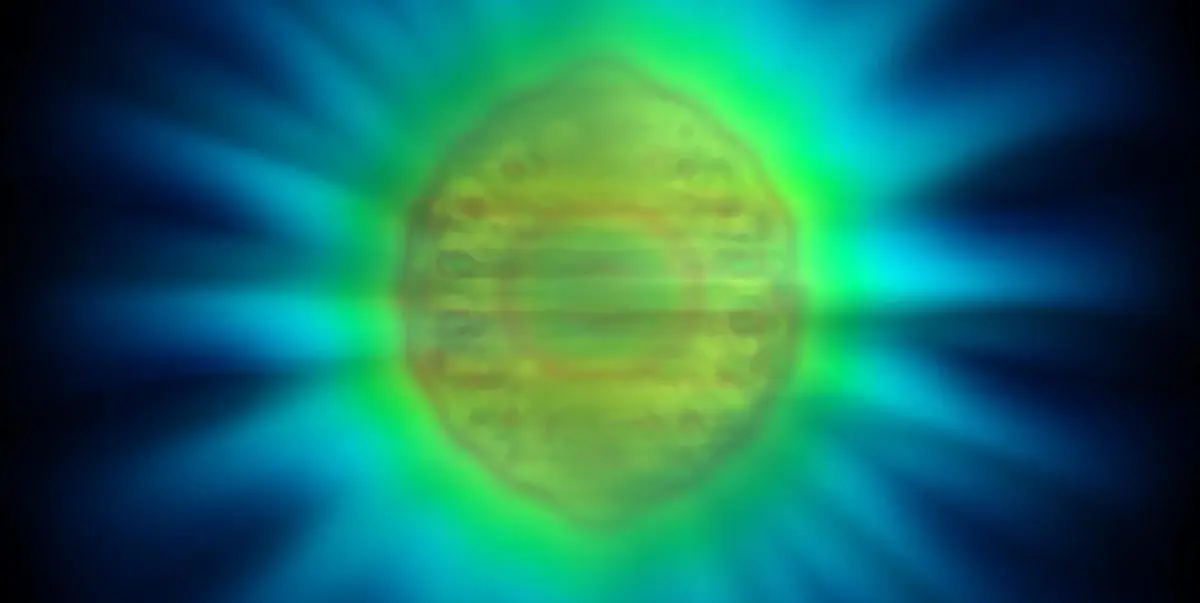Using a groundbreaking new technique, researchers have published the first detailed image ever taken of a photon (a single particle of light). Researchers from Birmingham have produced the first image of a photon, a lemon-shaped particle of light emitted from the surface of a nanoparticle.
The theory that makes this image possible, published November 14 in the journal Physical Review Letters, allows scientists to calculate and understand various properties of these quantum particles; This could open up a host of new possibilities in fields such as quantum computing and photovoltaics. devices. and artificial photosynthesis.
The quantum behavior of light is well established by over 100 years of experiments showing that it can exist in both wave and particle form. But our basic understanding of quantum nature is far behind, and we have only a limited understanding of how photons are created and propagated or how they change in space and time.
“We want to understand these processes to exploit this quantum aspect,” first author Ben Yuen, a research fellow at the University of Birmingham in the United Kingdom, told LiveScience in an email. “How do light and matter actually interact at this level?”
But the nature of light means that the answer to this question has almost unlimited possibilities. “We can think of a photon as a fundamental excitation of the electromagnetic field,” Yuen explained. These fields represent a continuum of different frequencies, each potentially excitable. “You can break the continuum into smaller pieces, and between any two points there are an infinite number of possible points to choose from,” Yuen added.
As a result, the properties of a photon depend largely on the properties of the medium, leading to incredibly complex mathematics. “At first glance, we would have to write and solve an infinite number of equations to get to the answer,” Yuen said.
Also read – How did Neanderthals master making glue and ribbon?
To tackle this seemingly impossible task, Yuen and co-author Angela Demetriadou, professor of theoretical nanophotonics at the University of Birmingham, used a clever mathematical trick to significantly simplify the equation.
Entering imaginary numbers (impossible multiples of the square root of -1) is a powerful tool for tackling complex equations. Manipulation of these imaginary components allows many complex terms in the equation to cancel each other out. Converting all imaginary numbers to real numbers before arriving at the solution makes the calculation much easier.
“We transformed this true frequency continuum into a discrete set of complex frequencies,” Yuen explained. “This way, we simplify the equation from a continuum to a discrete set that we can work with. We can put them in the computer and solve them.”
The team used these new calculations to model the properties of a photon emitted from the surface of a nanoparticle; explained the interaction with the emitter and how the photon is emitted from the source. Based on these results, the team produced the first image of the photon, a lemon-shaped particle that has never been seen before in physics.
However, Yuen emphasized that this is only the form of photons produced under these conditions. “Form depends entirely on the environment,” he said. “That’s the whole point of nanophotonics; by shaping the medium, we can actually shape the photon itself.”
The team’s calculations provide a fundamental understanding of the properties of this quantum particle; Ewen believes this information will open new avenues of research for physicists, chemists and biologists.
“We could be understanding optoelectronic devices, photochemistry, light harvesting and photovoltaics, photosynthesis, biosensors and quantum communications,” Yuen said. “And there will be a whole host of unknown applications. By making this kind of really fundamental theory, you open up new possibilities in other fields.”













